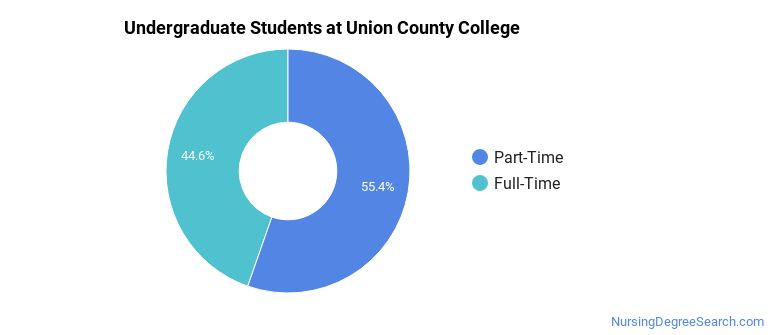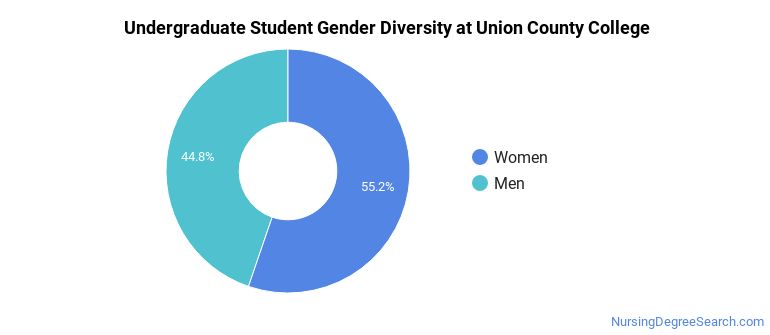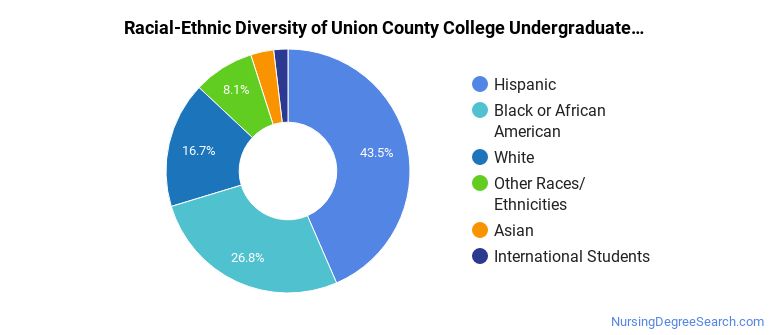Union County College Nursing Programs
Union County College is a public institution located in Cranford, New Jersey. Cranford is considered a suburb and offers tranquility and safety near the excitement of a city center.
Where Is Union County College?

Contact details for Union County College are given below.
| Contact Details | |
|---|---|
| Address: | 1033 Springfield Avenue, Cranford, NJ 07016-1528 |
| Phone: | 908-709-7000 |
| Website: | www.ucc.edu |
How Do I Get Into Union County College?
You can apply to Union County College online at: https://apply.ucc.edu/
Can I Afford Union County College?
Student Loan Debt
While almost two-thirds of students nationwide take out loans to pay for college, the percentage may be quite different for the school you plan on attending. At Union County College, approximately 4% of students took out student loans averaging $4,956 a year. That adds up to $19,824 over four years for those students.
Union County College Undergraduate Student Diversity

Gender Diversity
Of the 3,705 full-time undergraduates at Union County College, 45% are male and 55% are female.

Racial-Ethnic Diversity
The racial-ethnic breakdown of Union County College students is as follows.

| Race/Ethnicity | Number of Grads |
|---|---|
| Asian | 113 |
| Black or African American | 994 |
| Hispanic or Latino | 1,611 |
| White | 618 |
| International Students | 70 |
| Other Races/Ethnicities | 299 |
Over 50 countries are represented at Union County College. The most popular countries sending students to the school are Brazil, Colombia, and Venezuela.
Union County College Nursing Concentrations
The table below shows the number of awards for each concentration.
| Major | Associate’s | Undergraduate Certificate | TOTAL |
|---|---|---|---|
| Registered Nursing | 296 | 0 | 296 |
| Licensed Practical/Vocational Nurse Training | 0 | 42 | 42 |
| TOTAL | 296 | 42 | 338 |
References
*The racial-ethnic minorities count is calculated by taking the total number of students and subtracting white students, international students, and students whose race/ethnicity was unknown. This number is then divided by the total number of students at the school to obtain the racial-ethnic minorities percentage.
More about our data sources and methodologies.
